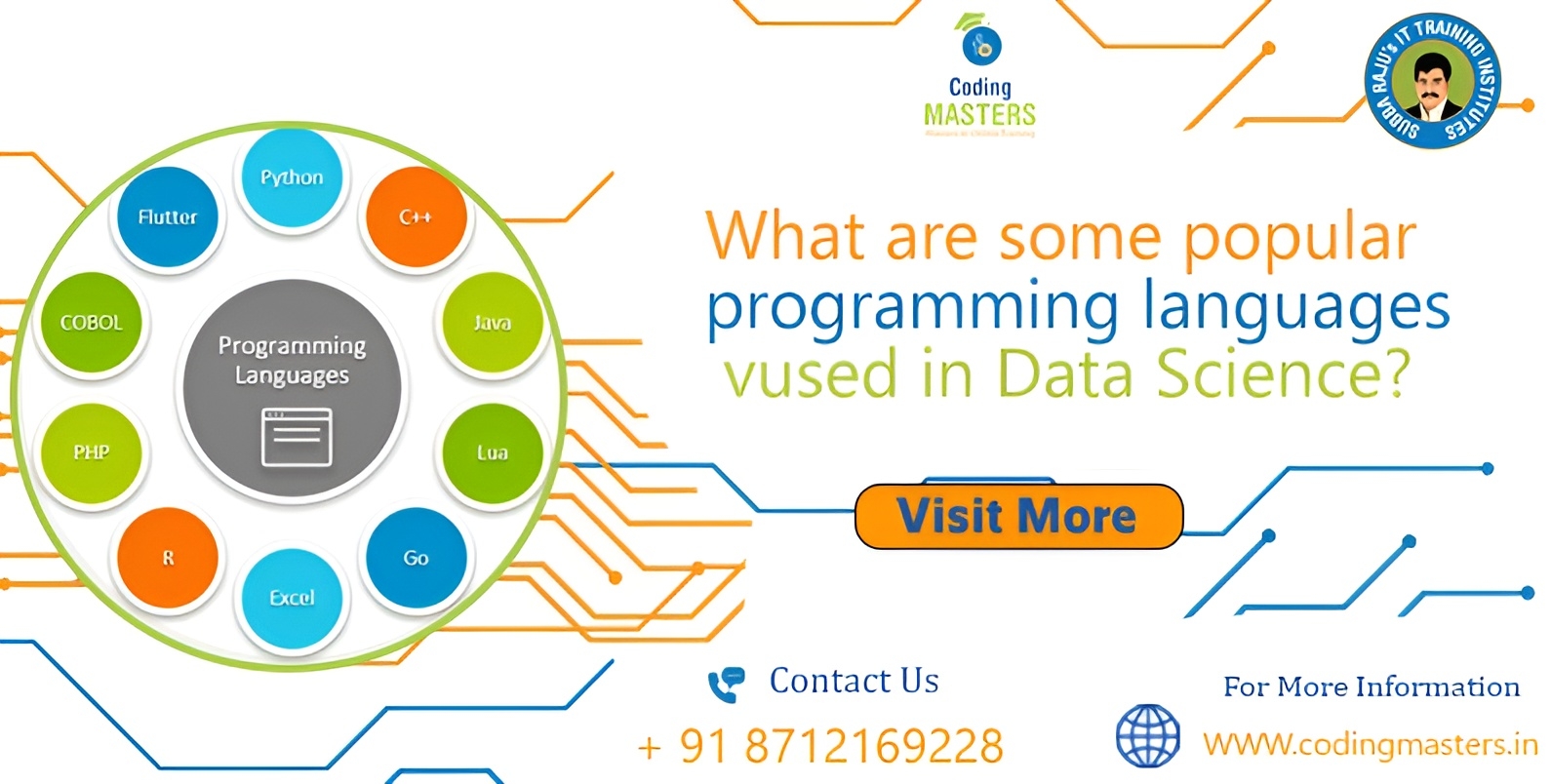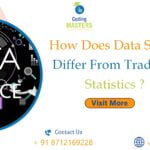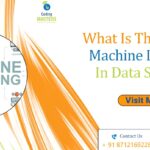What Are Some Popular Programming Languages Vused in Data Science?

Programming Languages for Data Science
Data science has become an integral part of various industries such as healthcare, finance, retail, and more. The field involves analyzing and interpreting complex data sets to generate actionable insights that drive business strategies and decisions. Programming languages are at the heart of data science, providing the necessary tools and frameworks for data manipulation, analysis, machine learning, and big data processing. In this article, we explore some of the most popular programming languages for data science and their unique strengths.
Python
Python is often considered the best programming language for data science due to its simplicity, readability, and versatility. With a user-friendly syntax, Python is ideal for both beginners and experienced developers. The language’s extensive libraries—such as NumPy, pandas, matplotlib, and scikit-learn—allow data scientists to perform a variety of tasks like data manipulation, statistical analysis, and machine learning with minimal effort. Additionally, Python’s frameworks like TensorFlow and Keras have propelled its success in deep learning and AI development, making it a dominant language in the data science community.
Python’s ability to integrate with other languages and platforms has further solidified its place as the go-to language for many data science projects. From web scraping and automation to advanced data analysis and machine learning, Python is a versatile choice for tackling a wide range of data challenges.
R
R is another highly popular programming language, particularly favored by statisticians and data scientists working in research and academia. Known for its strong statistical and graphical capabilities, R is widely used in fields requiring complex data analysis and visualization. It boasts a rich ecosystem of libraries and packages such as ggplot2 for data visualization, dplyr for data manipulation, and caret for machine learning.
R excels at handling large, multi-dimensional data sets and is often the preferred tool for tasks like statistical modeling, hypothesis testing, and advanced analytics. Its open-source nature and active community contribute to its popularity, especially in data-heavy industries like finance, bioinformatics, and healthcare.
SQL
SQL (Structured Query Language) remains essential for working with relational databases and is one of the foundational languages for data manipulation. As a programming language for data science, SQL allows data scientists to query, retrieve, and manage data from databases like MySQL, PostgreSQL, SQLite, and more. Mastery of SQL enables data scientists to organize and structure data efficiently, which is especially important when dealing with large-scale datasets.
SQL is critical for tasks such as data extraction, filtering, joining multiple data sources, and transforming data for analysis. Having a solid understanding of SQL allows data scientists to work seamlessly with structured data, making it an indispensable tool in data-centric industries.
Java and Scala
Though Python and R dominate the field of data science, Java and Scala are key players when it comes to big data processing. These languages are often used in conjunction with frameworks like Apache Spark and Hadoop to handle vast amounts of data across distributed systems. Java is renowned for its performance, scalability, and reliability, making it an ideal choice for building robust enterprise-level data processing systems.
Scala, being a functional and object-oriented language, is a favorite for big data processing, especially when working with Spark. Both Java and Scala are highly optimized for speed and performance, making them suitable for tasks that require high throughput and minimal latency in large-scale data environments.
MATLAB
MATLAB is a high-performance language often used for mathematical computing, algorithm development, and data visualization. It is particularly popular in academic and engineering circles, where complex numerical computations and simulations are required. MATLAB offers a wide range of built-in functions for data analysis, signal processing, and machine learning, making it an ideal tool for technical and scientific computing tasks.
Though MATLAB is more specialized than Python or R, its capabilities in areas like matrix computations, linear algebra, and statistical analysis make it a valuable resource for data scientists working in specialized fields such as engineering, finance, and research.
Conclusion
Choosing the right programming language for data science depends on the specific needs of the project, the type of data being analyzed, and the industry requirements. Python and R are excellent choices for general data analysis, machine learning, and statistical modeling. SQL remains indispensable for handling structured data in relational databases, while Java and Scala are indispensable when dealing with large-scale data processing. MATLAB excels in technical tasks requiring advanced mathematical computations.
Understanding the strengths and use cases of these languages is key to making informed decisions when embarking on data science projects. Whether you’re working on data manipulation, building predictive models, or processing large datasets, selecting the right programming language is crucial for the success of your data-driven endeavors.
By mastering these programming languages for data science, professionals can leverage the power of data to build innovative solutions and drive business growth across industries.
Contact Coding Masters for more information.
FAQ’s
- What is the best programming language for data science?
- Python is widely regarded as the best language for data science due to its simplicity, versatility, and vast libraries for data analysis and machine learning.
- Why is R used in data science?
- R is favored for statistical analysis and data visualization, especially in research and academic fields, due to its rich ecosystem of statistical tools and packages.
- Do I need to know SQL for data science?
- Yes, SQL is essential for querying and managing data stored in relational databases, making it a fundamental skill for data scientists.
- What is the role of Java and Scala in data science?
- Java and Scala are primarily used for big data processing with frameworks like Apache Spark and Hadoop, helping manage large-scale data sets.
- How is MATLAB used in data science?
- MATLAB is used for mathematical computing, algorithm development, and data visualization, particularly in specialized fields like engineering and finance.
- What makes Python so popular in data science?
- Python‘s popularity stems from its easy-to-learn syntax, extensive libraries for data manipulation and machine learning, and strong community support.
- Which programming language is best for big data?
- Java and Scala are best suited for big data processing, offering scalability and performance, especially with tools like Apache Hadoop and Spark.




